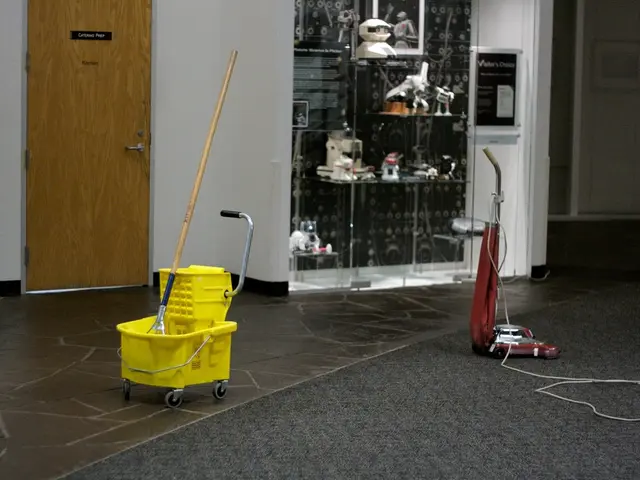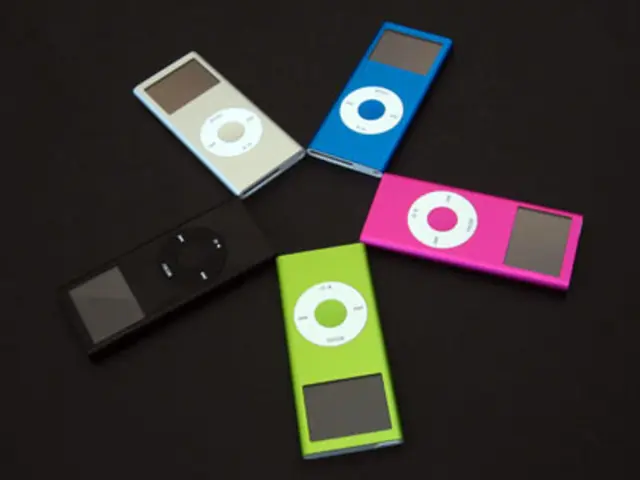"It outlines the framework that has given rise to the music industry as we know it today": The path to democratized music production, paved by a few pioneers.
Revolutionary Week 2025: The title alone should grab your attention if you're into music production! You probably landed here because you're involved in recording, whether you're a pro carving a career, a weekend hobbyist, or simply someone intrigued by the world of audio creation. Today, the same technology that once belonged only to the studios is now within our reach, thanks to the magic of innovation.
The journey to this era of musical democratization started way back in the mid-50s with multi-track technology. One significant turning point was Ampex's 8-track tape system, which allowed for multiple instruments to be layered, one on top of another, taking the music scene by storm.
Despite the initial cost and size of these machines, it only took a few more years for technology to be distilled into something that could be considered domestic level. Companies like Tascam led the charge, releasing cheaper alternatives such as the TEAC 144 in 1979. This innovative device allowed for the recording of four mono tracks directly onto the ever-popular audio cassette. The term "Portastudio" was born, soon becoming a staple in the lexicon of any amateur music-maker.
Experimentation in electronic music during the 70s was exploding, with artists like Jean-Michel Jarre making use of his Paris flat and a handful of synthesizers for his early synth-dominated albums. Meanwhile, the BBC's Radiophonic Workshop was pushing boundaries with tape manipulation, eventually inspiring a new generation of producers to explore unconventional techniques.
As the 80s rolled around, companies started developing standalone sequencers, allowing synth enthusiasts to join together a series of notes in a row. Although these early sequencers only allowed a limited number of notes, the switch to digital technology allowed for more curation, given the time and inclination to input data.
One influential player in music technology during this time was Roland, who produced devices like the MC-8 and MC-4. These sequencers were complex to operate, with more emphasis on data entry rather than playing notes. They commanded substantial price tags, but they laid the groundwork for future advancements.
The arrival of MIDI (Musical Instrument Digital Interface) was a game-changer. This protocol, adopted by various manufacturers, allowed synths, sequencers, and drum machines to play nicely together. The first successful public demonstration took place at NAMM in 1983, with a Sequential Prophet 600 synthesizer and a Roland Jupiter 6 interacting seamlessly.
The Atari ST computer, launched in 1985, played a crucial role in this evolving ecosystem, offering a more flexible and affordable alternative to dedicated hardware sequencers. Computer musicians quickly jumped on the trend, repurposing the Atari for making sweet, sweet electronic music. Steinberg was one of the first companies to embrace this opportunity, releasing Pro-24, which allowed for the sequencing of up to 24 tracks and on-screen editing.
Affordable, accessible, and powerful – the Atari ST paved the way for the home music-making revolution we see today. As the years went by, technology advanced, and computers like the Windows PC and the Apple Mac became the production hubs of choice for bedroom and professional producers alike.
But the story doesn't end there. The rise of digital technology led to the demise of many traditional synthesizers and drum machines. Yet these classics are still cherished today and command high prices in the secondhand market. The TR-808, TB-303, and 909, manufactured by Roland, are prime examples of this phenomenon.
Today, music production is borderless, with powerful software and hardware at our fingertips – all we need is imagination! The spirit of those pioneering innovators lives on in every click, every tap, every layer we add to our tracks. From garage bands to EDM mavericks, the world is our studio. Tonight, we create. Tomorrow, we revolutionize. Embrace the music within you!
In the realm of musical democratization, technological advancements have transformed gadgets such as portable studios, sequencers, and computers into affordable tools for entertainment and music creation, empowering anyone with an interest in audio production. Today, a vast array of technology enables music enthusiasts to experiment with various genres and techniques, just like the pioneers who pushed boundaries in the 50s, 60s, 70s, and 80s, bridging the gap between studio-quality music and personal entertainment.








